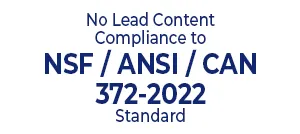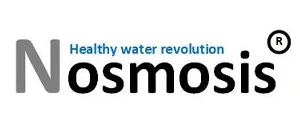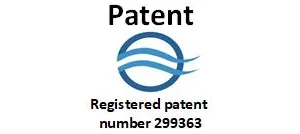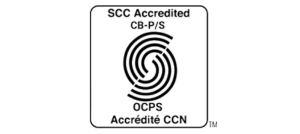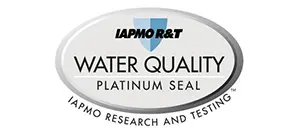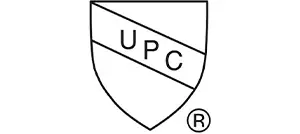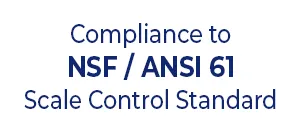Executive Summary
Total Dissolved Solids (TDS) meters have become a popular tool for consumers concerned about their water quality. However, despite their widespread use and seemingly scientific approach, TDS meters provide an incomplete and potentially misleading picture of your water’s safety. While these devices measure dissolved ionized substances in water, they fail to detect numerous harmful contaminants that could affect your health. This article explains why TDS measurements alone should not be your basis for water quality decisions and what alternatives provide more meaningful information about what’s really in your water.
What is TDS?
TDS stands for Total Dissolved Solids, a measurement of all inorganic and organic substances dissolved in water. These substances include minerals, salts, metals, cations (positively charged ions), and anions (negatively charged ions). TDS is typically expressed in parts per million (ppm) or milligrams per liter (mg/L).
When water comes into contact with soluble materials, it absorbs particles, creating what we measure as total dissolved solids. Major components of TDS typically include:
- Calcium, sodium, magnesium, and potassium cations (positively charged ions)
- Carbonates, bicarbonates, chlorides, and nitrate anions (negatively charged ions)
- Sulfates and various mineral compounds
The EPA has established 100 ppm as the recommended MINIMUM TDS level for drinking water, though levels up to 1,000 ppm are generally considered acceptable.
The Problem with TDS Meters
Imagine this scenario: You’ve read concerning news about lead contamination in a nearby city’s water supply. Worried about your own water, you purchase a TDS meter after a brief conversation with a salesperson who assures you it will scientifically measure your water quality. Within seconds, you have a “scientific” result showing your water is pure and safe for drinking.
Yet something doesn’t add up—your water still looks cloudy, smells unpleasant, and tastes terrible. How can the meter say it’s clean?
This is a situation we encounter frequently at TipaTech when speaking with customers who have relied on TDS meters. The answer is simple but concerning: TDS meters only measure electrically charged (ionized) particles in water, missing numerous potentially harmful contaminants. This creates a dangerous illusion of safety while providing incomplete information about what’s actually in your water.
What TDS Meters Actually Measure
A TDS meter works by measuring the electrical conductivity of water. Since dissolved ionized solids increase water’s conductivity, the meter uses this measurement to estimate TDS levels. However, this approach has significant limitations:
Limited to conductive substances: TDS meters only detect dissolved substances that conduct electricity. Non-conductive contaminants remain invisible to these devices.
Cannot identify specific contaminants: Even when detecting dissolved solids, TDS meters cannot tell you which specific substances are present—only their approximate total concentration.
Too insensitive for many toxins: Many dangerous contaminants exist at concentrations measured in parts per billion (ppb), 1,000 times smaller than the parts per million (ppm) that TDS meters typically measure.
Cannot distinguish between beneficial and harmful substances: A TDS reading doesn’t differentiate between beneficial minerals like calcium and magnesium versus harmful contaminants like lead or arsenic.
What TDS Meters Miss
Through our extensive water quality research at TipaTech, we’ve identified that the numerical value from a TDS meter only represents ionized compounds in your water. However, numerous concerning contaminants contribute little or nothing to TDS readings, including:
- Thousands of pesticide varieties
- Gasoline and petroleum derivatives
- Oils (like motor oil)
- Pharmaceutical compounds
- Per- and polyfluoroalkyl substances (PFAS)—”Poly Fluorinated Alkyl Substances”
- Biological contaminants (bacteria, viruses, parasites)
- Microplastics
Even more concerning, TDS meters lack sufficient sensitivity to detect dangerous heavy metals at their harmful levels. Consider these examples of dangerous water contaminants measured in micrograms per liter (μg/L) that typically won’t register on a TDS meter:
| Contaminant | Safety Threshold (μg/L) | Symbol |
|---|---|---|
| Antimony | 6 | Sb |
| Uranium | 15 | U |
| Arsenic | 10 | As |
| Beryllium | 4 | Be |
| Silver | 100 | Ag |
| Mercury | 1 | Hg |
| Chromium | 50 | Cr |
| Molybdenum | 70 | Mo |
| Nickel | 20 | Ni |
| Selenium | 10 | Se |
| Lead | 10 | Pb |
| Cyanide | 50 | CN |
| Cadmium | 5 | Cd |
At TipaTech, our water filtration systems are specifically designed to address these dangerous contaminants that TDS meters simply cannot detect.
Understanding TDS Levels
A common misconception is that lower TDS automatically means safer water. However, the relationship between TDS levels and water quality is more complex. Here’s a more nuanced perspective that we’ve developed through years of water quality research:
TDS Ranges and Their Implications
| TDS Level (mg/L) | Classification | Considerations |
|---|---|---|
| Below 50 | Extremely low – potential health concerns | Lacks essential minerals, may be too aggressive (leaches pipes) |
| 50-100 | Very low – borderline concerning | May taste flat, potentially over-filtered |
| 100-500 | Normal and recommended range for drinking water | Generally good balance of minerals |
| 500-1000 | Higher but still acceptable range | May have slightly mineral taste but typically safe |
| 1000-1200 | High – appropriate only with suitable filtration | May have distinct mineral taste, certain contaminants possible |
| Above 1200 | Extremely high – not recommended for consumption | Not suitable for drinking, likely requires specialized treatment |
The Reverse Osmosis Paradox
Many water companies promote reverse osmosis (RO) systems based on their ability to produce water with very low TDS readings. However, this approach presents its own set of concerns that we’ve addressed in our TipaTech filtration systems:
Mineral removal: While RO effectively removes contaminants, it also strips beneficial minerals from water.
Aggressive water: Ultra-low TDS water can be “aggressive,” meaning it actively seeks minerals and may leach them from pipes or fixtures.
Potential health implications: Some research suggests that long-term consumption of demineralized water may not be optimal for health, as water is a source of essential minerals like calcium and magnesium.
Taste considerations: Water with very low TDS often tastes “flat” or “empty” compared to mineral-balanced water.
This is why at TipaTech, our approach differs fundamentally from simple RO systems. Our filtration technology focuses on reducing significantly harmful contaminants while preserving and even enhancing beneficial minerals like magnesium that support your health.
The TipaTech Difference: Beyond TDS
After years of research and development, we at TipaTech have created water filtration systems that address the real concerns in your water—not just what a TDS meter can detect. Our T-18 ecological whole house water filtration system offers several advantages that directly address the limitations of TDS measurement:
Addressing What TDS Meters Miss
Sub-Micron Filtration: Our systems filter water down to one micron, reducing significantly contaminants TDS meters can’t detect, including intestinal parasites like Giardia, rust particles, and microplastic fibers.
Lead Protection: Our unique technology reduces lead leaching from pipes and connectors throughout your home—a critical safety feature no TDS meter can detect.
Pharmaceutical and Chemical Reduction: We target the reduction of agricultural chemicals, medications, and other contaminants that often remain completely invisible to TDS readings.
Gas Reduction: As the only water filtration system that effectively releases air and oxygen-derived gases while reducing radioactive and toxic gases from contaminating your water.
Enhancing What Matters for Health
Mineral Balance: Unlike systems that focus solely on reducing TDS, our filtration technology preserves beneficial minerals and even adds essential magnesium (60 mg/L) to help decrease the risk of cardiac events and neurological disorders.
Biological Safety: Our systems effectively reduce aerobic bacteria such as Giardia that pose significant health risks yet don’t affect TDS readings.
Scale Reduction: We reduce up to 99% of scale deposits in pipes and appliances without using salt-based softening that can impact your health and the environment.
Better Approaches to Water Quality
Based on our extensive experience at TipaTech, we recommend these approaches to truly understand your water quality:
1. Comprehensive Water Testing
Professional laboratory testing can identify specific contaminants in your water, including those that TDS meters miss. At TipaTech, we can help arrange testing for:
- Heavy metals (lead, arsenic, mercury)
- Pesticides and herbicides
- Volatile organic compounds (VOCs)
- PFAS (“Poly Fluorinated Alkyl Substances”)
- Microbial contaminants
2. Consider Multiple Water Quality Parameters
Beyond TDS, we evaluate multiple water quality indicators, including:
- pH level (acidity/alkalinity)
- Hardness (calcium and magnesium content)
- Turbidity (cloudiness)
- Specific contaminant levels
- Bacterial presence
3. Whole-House Protection
Rather than relying on point-of-use systems that only address water at a single tap, our TipaTech whole-house systems provide comprehensive protection for all the water entering your home. This approach ensures that every faucet, shower, and appliance receives properly treated water.
The Marketing Reality Behind TDS Meters
TDS meters have gained popularity partly because they provide instant, seemingly scientific results that sales representatives can use to demonstrate their products’ effectiveness. The simplicity is appealing—a number goes down after filtration, suggesting improvement.
However, this creates a problematic sales dynamic that we’ve chosen to avoid at TipaTech:
- The meter shows high numbers for tap water
- After filtration (particularly RO), the number drops dramatically
- The customer perceives value and effectiveness
- The sale is completed based on incomplete information
Instead, we focus on educating our customers about what truly matters for their water quality and health, beyond just a simple TDS reading.
Conclusion: The TipaTech Approach
At TipaTech, we believe in a more thoughtful approach to water quality. While TDS measurements provide some information, they offer an incomplete picture at best and a misleading one at worst. Our water filtration systems are designed to address the full spectrum of water quality concerns—both what TDS meters can and cannot detect.
Since 2004, we’ve dedicated ourselves to providing true water quality solutions that:
- Target specific contaminants that matter for your health
- Preserve and enhance beneficial minerals
- Protect your entire home’s water supply
- Meets NSF/ANSI 42, 61, and 372 standards, certified by IAPMO for material and safety standards.
We invite you to experience the difference that scientifically validated water filtration can make for your home and family. Contact our water quality experts today to learn more about how TipaTech can provide you with water that’s truly clean and healthy—beyond what any TDS meter can tell you.
TipaTechhas been developing and manufacturing advanced water filtration systems since 2004. Our systems have been tested and certified by leading standards institutes, NSF/ANSI 42, 61, and 372 standards, certified by IAPMO for material and safety standards. To learn more about our whole house water filtration systems, call +1 917 870 6676 OR GO TO
TIPATECH.COM




